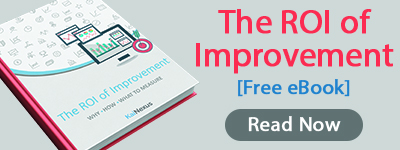 Do you remember the last time you were injured? Like, physically injured? What about the last time one of your kids or siblings got hurt? What did you do? Did you wait a few days to see if the injury went away? Did you fight away the tears and walk around on your freshly-sprained ankle? Did you continue to write with a broken index finger?
Do you remember the last time you were injured? Like, physically injured? What about the last time one of your kids or siblings got hurt? What did you do? Did you wait a few days to see if the injury went away? Did you fight away the tears and walk around on your freshly-sprained ankle? Did you continue to write with a broken index finger?
I’d venture to guess that’s not what you did; at least, that’s not what I did when I sprained my ankle. I immediately RICE’d it (rest, ice, compression, elevation for those not privy to formal medical terms), saw a doctor and took measures to keep weight off while it healed.
When pain is significant enough, you fix it, right? You see the doctor, take medication, start physical therapy, etc. Interestingly enough, businesses everywhere use these exact same behaviors today to make decisions - including software solutions!
At the beginning of this year, I wrote a post about how the ins-and-outs gaining approval to purchase a system like KaiNexus to accelerate your continuous improvement culture. You can check out that post here. It’s a tactical description of a typical buyer’s journey, and it’s a great introduction for anyone who isn’t familiar with their internal procurement processes.
That post articulates that understanding the true value of a solution is one of the most important things you can do when presenting that solution to your leadership for purchase. However, we heard back from a number of you that understanding the true value was proving more difficult than anyone expected.
I hope that this post will make it easier for you to articulate the value of a solution by first understanding the problem it solves and the pain associated with that problem.
By asking five key questions when presenting a solution to your higher-ups, you will drastically increase the likelihood that you’ll get the approval you want. Understanding the answers to these five questions will put you in the best position to succeed when faced with presenting KaiNexus as a solution for continuous improvement.
- What problem are you trying to solve?
The goal of this question is to find your organization’s pain in the you-know-what. Don’t get distracted by small pains or nags - focus on the big migraine because your company will do anything to solve it.
Once you’ve defined the biggest pain point, you’ll be able to construct an accurate problem statement.
With that said, do not fall into the trap of describing the problem in your own terms. You must seek to understand the problems your leaders are trying to solve and build your problem statement in their terms, not yours.
- What is the problem costing your organization?
In layman’s terms, what is this problem costing your company in lost revenue, savings or profits? What wastes are associated with this problem?
Here’s the point where you need to be as exact as possible. Tie a specific dollar amount to this pain and make sure everyone agrees with the values you’ve assigned. This forces everyone in the decision-making process to think about how important your solution really is.
- How does this problem affect everyone personally?
One of our customers often speaks about how they encourage all of their staff members to solve the “three-foot radius” around themselves. Want another powerful way to gain alignment on your solution? Figure out how this problem is affecting the everyday life of everyone involved in the decision-making process and show how your solution can alleviate their pain – not just yours.
- Is solving this problem a priority right now?
There is nothing more frustrating than doing the leg-work of evaluating a solution only to be told, “we’re going to look at this next year.” Before spending too much time finding a fix, make sure the problem is worth solving now. Until solving the problem becomes a priority, you’ll be spinning your wheels trying to get traction on a purchase.
- What would you like to do next?
You must have a clear direction of exactly what you want to do next after you’ve gained alignment.
Imagine this: You’re presenting to your boss. You’ve identified a HUGE pain point. You’ve quantified the value of that pain, and your boss agrees. At this point, you’re super excited because you’re crushing your presentation.
Then your boss says, “Okay, I agree. What do you want to do now?”
Not having a detailed plan to move forward will put this entire process in jeopardy, and you’ll never get the solution you want. Lean Leadership is about asking employees to guide the organization forward. As one of those employees, you must be willing to recommend a path forward or you’re not living up to your part of the bargain. Trust me though, your leaders will appreciate that you actually created a plan because it’s one less thing for them to do --- talk about creating value.
When you present KaiNexus to your leaders, or any solution for that matter, ask these five questions. Then, get ready to enjoy your spoils with a brand new, problem-solving, value-adding, tail kicking continuous improvement software solution.
Of course, it wouldn't hurt to cover the ROI of KaiNexus in that presentation, either. Check out the details in this eBook -



Add a Comment